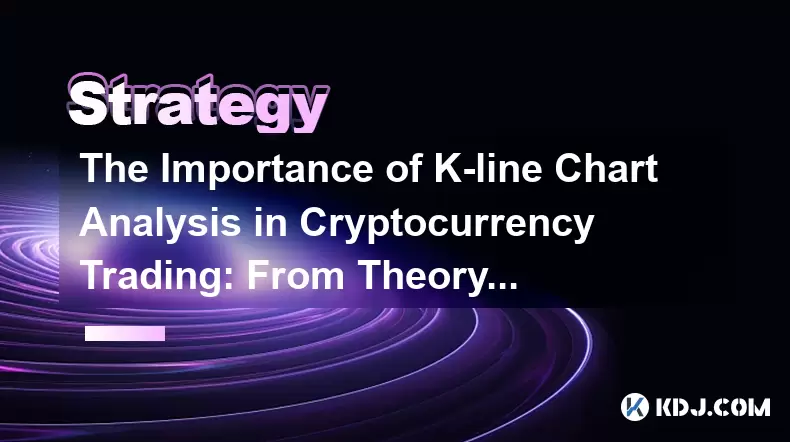-
 Bitcoin
Bitcoin $105,724.6656
0.49% -
 Ethereum
Ethereum $2,538.5330
-0.28% -
 Tether USDt
Tether USDt $1.0005
0.01% -
 XRP
XRP $2.1560
0.06% -
 BNB
BNB $649.1204
-0.45% -
 Solana
Solana $147.1302
0.55% -
 USDC
USDC $1.0000
0.00% -
 Dogecoin
Dogecoin $0.1770
-0.13% -
 TRON
TRON $0.2712
-0.06% -
 Cardano
Cardano $0.6315
-0.77% -
 Hyperliquid
Hyperliquid $40.8568
-3.75% -
 Sui
Sui $3.0175
-0.80% -
 Bitcoin Cash
Bitcoin Cash $445.9314
2.37% -
 Chainlink
Chainlink $13.2302
0.01% -
 UNUS SED LEO
UNUS SED LEO $9.1912
1.66% -
 Avalanche
Avalanche $19.2227
0.09% -
 Stellar
Stellar $0.2584
-0.65% -
 Toncoin
Toncoin $2.9679
-1.87% -
 Shiba Inu
Shiba Inu $0.0...01208
-0.33% -
 Hedera
Hedera $0.1546
-2.82% -
 Litecoin
Litecoin $85.9314
-0.25% -
 Polkadot
Polkadot $3.8018
-0.36% -
 Ethena USDe
Ethena USDe $1.0004
-0.02% -
 Monero
Monero $315.5986
1.71% -
 Dai
Dai $1.0000
0.01% -
 Bitget Token
Bitget Token $4.5289
-0.36% -
 Pepe
Pepe $0.0...01122
0.44% -
 Pi
Pi $0.6173
5.61% -
 Uniswap
Uniswap $7.2923
-1.93% -
 Aave
Aave $274.6582
-4.01%
How to make money by hedging spot currency prices
Hedging spot currency prices involves techniques like a long hedge, short hedge, and basis hedge, providing price protection, risk limitation, and diversification benefits, while differing from arbitrage due to its focus on risk reduction.
Jan 07, 2025 at 05:52 pm

Key Points of the Article:
- Techniques for Hedging Spot Currency Prices
- Benefits of Hedging Strategy
- Differences Between Hedging and Arbitrage
- Case Study: Hedging with Spot Currency Pairs
- Advanced Hedging Strategies for Skilled Traders
- Understanding Hedging Options
- Importance of Risk Management in Hedging
How to Make Money by Hedging Spot Currency Prices
Hedging Techniques
- Long Hedge: Seller of a derivative contract, paired with a long position in the underlying asset. This hedges against a potential decline in the asset price.
- Short Hedge: Buyer of a derivative contract while holding a short position in the underlying asset. This protects against a potential rise in the asset price.
- Basis Hedge: Combines a long and short hedge on different delivery dates to gain exposure to the yield curve.
Benefits of Hedging Strategy
- Price Protection: Reduces the volatility of asset price fluctuations, allowing for disciplined trading.
- Risk Limitation: Mitigates the exposure to market risks, providing greater control over potential losses.
- Diversification: Hedging expands asset exposure, allowing for diversification beyond single assets.
Differences Between Hedging and Arbitrage
- Hedging: A risk-reducing strategy that protects against market uncertainties.
- Arbitrage: A profit-generating technique that exploits price discrepancies across different markets.
- Correlation: Hedging seeks to neutralize risk by using correlated assets, while arbitrage involves uncorrelated assets.
Case Study: Hedging with Spot Currency Pairs
- Asset Selection: Identify currency pairs with high volatility and correlation.
- Hedging Ratio: Determine the optimal hedge ratio, balancing risk exposure and potential profits.
- Position Monitoring: Regularly adjust positions to maintain the desired hedge ratio.
Advanced Hedging Strategies for Skilled Traders
- Dynamic Hedging: Adjusts hedge parameters in response to market conditions, aiming to maximize profits.
- Portfolio Hedging: Hedges an entire portfolio, mitigating risk across multiple assets.
- Collar Hedging: Combines long and short options to create a range-bound strategy.
Understanding Hedging Options
- Forwards: Contractual agreements to exchange currencies at a specified date and price.
- Futures: Standardized exchange-traded contracts for delivery of currencies on a specific date.
- Options: Gives the holder the right but not the obligation to buy or sell an underlying asset at a predetermined price.
Importance of Risk Management in Hedging
- Market Volatility: Assess market volatility and its potential impact on hedge effectiveness.
- Position Sizing: Determine the optimal size of hedge positions based on risk tolerance and profit expectations.
- Contingency Planning: Develop backup plans in case of unexpected market conditions or hedging strategy failures.
FAQs
Q: When should I use hedging?
A: Hedging is recommended when there is a significant risk of price fluctuations in the underlying asset.
Q: Is hedging always profitable?
A: No, it is not guaranteed. Hedging costs can reduce potential profits or even lead to losses if mismanaged.
Q: What is an optimal hedge ratio?
A: The optimal hedge ratio depends on the correlation between the underlying asset and the hedging instrument.
Q: How do I monitor my hedging positions?
A: Regularly review market conditions and adjust positions as necessary to maintain the desired hedge ratio.
Q: What are some common pitfalls in hedging?
A: Common pitfalls include over-hedging, incorrect hedging ratio, and neglecting market volatility.
Disclaimer:info@kdj.com
The information provided is not trading advice. kdj.com does not assume any responsibility for any investments made based on the information provided in this article. Cryptocurrencies are highly volatile and it is highly recommended that you invest with caution after thorough research!
If you believe that the content used on this website infringes your copyright, please contact us immediately (info@kdj.com) and we will delete it promptly.
- Libre and the TON Foundation Are Collaborating to Create a $500M Telegram Bond Fund ($TBF)
- 2025-06-15 14:25:16
- Asia Broadband Inc. (OTC: AABB) Agrees to Sell its 100% Owned Bonanza Mineral Property in Mexico
- 2025-06-15 14:25:16
- Despite Mounting Delays, Bloomberg Analysts Project 75% to 90% Approval Chances for Key Spot ETFs
- 2025-06-15 14:20:12
- BYDFi Releases Limited Edition Co-Branded Ledger Nano X Hardware Wallet
- 2025-06-15 14:20:12
- After OM Token Crash, Mantra Calls for Industry-Wide Cooperation to Reduce Investor Risks
- 2025-06-15 14:15:23
- 3 Cryptos That Defied Donald Trump's Liberation Day Crash
- 2025-06-15 14:15:23
Related knowledge

Cryptocurrency K-line chart technical analysis manual: Learn these methods to increase your chances of making a profit
Jun 11,2025 at 11:21pm
Understanding the Basics of K-line ChartsK-line charts, also known as candlestick charts, are one of the most widely used tools in cryptocurrency trading. Each K-line represents a specific time period and provides information about the open, high, low, and close prices during that interval. The body of the candle shows the relationship between the openi...

The Importance of K-line Chart Analysis in Cryptocurrency Trading: From Theory to Practical Cases
Jun 11,2025 at 04:56pm
Understanding the Basics of K-line ChartsK-line charts, also known as candlestick charts, are a visual representation of price movements over specific time intervals. Each K-line encapsulates four critical data points: the opening price, closing price, highest price, and lowest price within a given timeframe. These charts originated in Japan during the ...

Cryptocurrency K-line Chart Interpretation Guide: How Novices Can Quickly Master the Basics of Technical Analysis
Jun 10,2025 at 08:56pm
Understanding the Basics of K-line ChartsK-line charts, also known as candlestick charts, are one of the most widely used tools in cryptocurrency trading for analyzing price movements. Each K-line represents a specific time period and shows the opening, closing, high, and low prices during that interval. For novices, grasping how to read these elements ...

How to Analyze Short-term and Long-term Trends of Cryptocurrencies through K-line Charts: A Complete Guide
Jun 15,2025 at 12:49pm
Understanding the Basics of K-line ChartsK-line charts, also known as candlestick charts, are essential tools used in cryptocurrency trading to visualize price movements over time. Each candlestick represents a specific time interval and contains four key data points: open, high, low, and close. The body of the candle shows the range between the opening...

Introduction to Cryptocurrency K-line Charts: How to Use Technical Analysis to Optimize Trading Decisions
Jun 12,2025 at 03:56pm
Understanding the Basics of K-line ChartsK-line charts, also known as candlestick charts, are one of the most essential tools used in cryptocurrency trading. Originating from Japan, these charts visually represent price movements over specific time intervals. Each candlestick displays four key pieces of information: the opening price, closing price, hig...

K-line Chart Analysis Skills: Key Chart Patterns in Cryptocurrency Trading
Jun 13,2025 at 10:21am
Understanding the Basics of K-line Charts in Cryptocurrency TradingK-line charts, also known as candlestick charts, are essential tools for analyzing price movements in cryptocurrency markets. Each candlestick represents a specific time frame and provides information about the open, high, low, and close (OHLC) prices during that period. In crypto tradin...

Cryptocurrency K-line chart technical analysis manual: Learn these methods to increase your chances of making a profit
Jun 11,2025 at 11:21pm
Understanding the Basics of K-line ChartsK-line charts, also known as candlestick charts, are one of the most widely used tools in cryptocurrency trading. Each K-line represents a specific time period and provides information about the open, high, low, and close prices during that interval. The body of the candle shows the relationship between the openi...

The Importance of K-line Chart Analysis in Cryptocurrency Trading: From Theory to Practical Cases
Jun 11,2025 at 04:56pm
Understanding the Basics of K-line ChartsK-line charts, also known as candlestick charts, are a visual representation of price movements over specific time intervals. Each K-line encapsulates four critical data points: the opening price, closing price, highest price, and lowest price within a given timeframe. These charts originated in Japan during the ...

Cryptocurrency K-line Chart Interpretation Guide: How Novices Can Quickly Master the Basics of Technical Analysis
Jun 10,2025 at 08:56pm
Understanding the Basics of K-line ChartsK-line charts, also known as candlestick charts, are one of the most widely used tools in cryptocurrency trading for analyzing price movements. Each K-line represents a specific time period and shows the opening, closing, high, and low prices during that interval. For novices, grasping how to read these elements ...

How to Analyze Short-term and Long-term Trends of Cryptocurrencies through K-line Charts: A Complete Guide
Jun 15,2025 at 12:49pm
Understanding the Basics of K-line ChartsK-line charts, also known as candlestick charts, are essential tools used in cryptocurrency trading to visualize price movements over time. Each candlestick represents a specific time interval and contains four key data points: open, high, low, and close. The body of the candle shows the range between the opening...

Introduction to Cryptocurrency K-line Charts: How to Use Technical Analysis to Optimize Trading Decisions
Jun 12,2025 at 03:56pm
Understanding the Basics of K-line ChartsK-line charts, also known as candlestick charts, are one of the most essential tools used in cryptocurrency trading. Originating from Japan, these charts visually represent price movements over specific time intervals. Each candlestick displays four key pieces of information: the opening price, closing price, hig...

K-line Chart Analysis Skills: Key Chart Patterns in Cryptocurrency Trading
Jun 13,2025 at 10:21am
Understanding the Basics of K-line Charts in Cryptocurrency TradingK-line charts, also known as candlestick charts, are essential tools for analyzing price movements in cryptocurrency markets. Each candlestick represents a specific time frame and provides information about the open, high, low, and close (OHLC) prices during that period. In crypto tradin...
See all articles

























































































